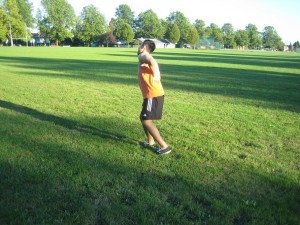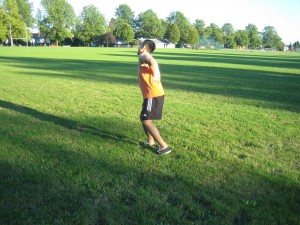Once the sciatic nerve is inflamed or irritated, it is a condition commonly called as sciatica. It is important to note that the sciatic nerve is the biggest and extensive nerve in the body which is comprised of nerve bundles in the lumbar spine. The nerve moves out of the spinal column at the lower back, travels through the hip and downward to the rear of the leg up to the sole of the foot.
There are various factors that can contribute to sciatica including herniated discs and tight piriformis. Most of the leading causes of sciatica can be triggered by certain exercises.
Herniated discs
The spinal column is composed of cartilage discs between the bones that serve as shock absorbers as well as cushioning between the bones. Once a disc is herniated, it protrudes from the spinal column. In severe cases, it compresses the nerves that leave the spine.
It is important to note that a herniated disc is usually triggered by incorrect lifting such as poor form during resistance training. Having weak core muscles can also add up to the condition since these muscles are responsible for stabilizing the spine during exercise.
Can piriformis syndrome cause sciatica?
The piriformis is a small-sized muscle positioned in the buttock right below the gluteus muscles. Once the muscle tightens or becomes inflamed, it triggers the irritation of the sciatic nerve.

The piriformis muscle is responsible for rotating the leg outwards and stabilizes the hip. Engaging in exercises that move the leg away from the center of the body can cause tightness of the muscle. Those who have weak inner thigh muscles are at risk for sciatica since the muscles on the exterior thigh and buttocks strain to stabilize the leg during activity.
Degenerative disc disease
Degenerative disc disease is an age-related condition in which the discs amidst the vertebral bones are worn out which triggers irritation of the spinal nerves and leads to sciatica. Daily activities, sports and injuries are the common contributing factors.
Just like with a herniated disc, incorrect lifting technique or form and weak core muscles can add up to the condition.
What is isthmic spondylolisthesis?
This condition develops once the vertebral bone glides forward and compresses the nerves in the spinal column which leads to sciatica. The condition has various possible causes including stress fractures due to heavy lifting.
Individuals who engage in gymnastics, weight lifting and football often end up with the condition due to the excess strain on the spine.
Considerations to bear in mind
Even though exercise can lead to sciatica in some individuals, it can also relieve the condition. Stretching exercises that involves pulling the leg across the center of the body and strengthening of the inner thighs are actually beneficial and can even prevent and relieve sciatica due to piriformis syndrome.
The exercises that strengthen the lower back and abdominal muscles can also prevent sciatica due to herniated discs and degenerative disc disease. It is vital to avoid or minimize engaging in exercises that place excess strain on the spine to prevent the condition. Observing the right form and using back supports particularly a weight belt can also prevent sciatica.

